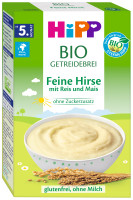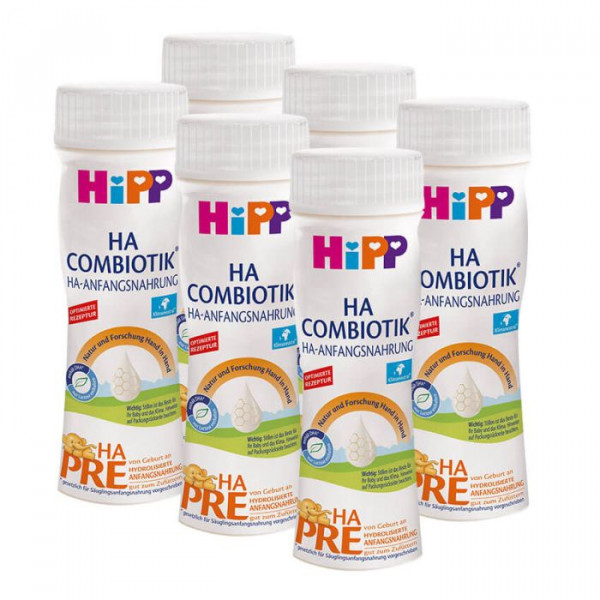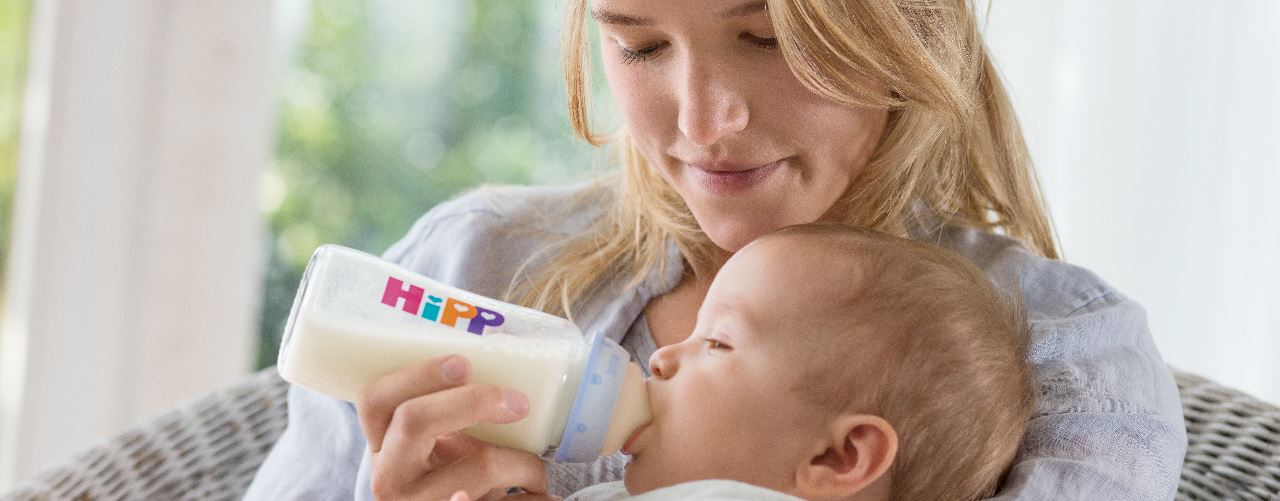Since 1999, the company has its own ethics charter based on responsibility to people, nature and the environment. Central concerns are fair competition and the respectful treatment of business partners, suppliers, customers and employees. HiPP recognizes that a perfect and harmonious alignment of our goals with our actions is a constant challenge. We want to face this and continuously improve ourselves in this process
*prices incl. VAT plus shipping costs
Ready to ship today,
Delivery time appr. 1-4 days²
- Order number: 110039
- best before: 26.08.2024
- Allergen-Information: Contains milk, whey and lactose
- EAN: 4062300403765
- Manufacturer product ID: 2226-03
- PZN: 14178575
- advice: Important: At this point it should be clearly noted the superiority of breastfeeding in conjunction with the recommendation to use the product only on the advice of independent professionals in the field of medicine, nutrition or medicines or other persons responsible for the care of infants. Note: The product is suitable for special feeding of infants from birth if they are not breastfed. Store in a dry place at room temperature. Please make sure that the packaging has reached you intact.
Low-allergen initial milk ready to drink on the go, with grandparents, ...
For 50 years, HiPP has put all its care and experience into producing the best infant milk formulas. Building on the latest findings in milk nutrition research, HiPP milk formulas are formulated to give your baby exactly what he or she needs for healthy development.
HiPP Combiotik is the latest generation of milk foods and is precisely tailored to your baby's nutritional needs at that particular age. With carefully selected ingredients and the unique combination of valuable ingredients based on nature, HiPP sets a new standard in infant nutrition. So you give your baby a good start to a happy future. Long-chain, polyunsaturated omega 3&6 fatty acids (LCP), as also found in breast milk. They are particularly important in the first months of life, as babies at this age cannot yet produce enough LCPs themselves.
HiPP HA PRE COMBIOTIK® Ready-to-drink formula for a healthy start.

- In the practical 200ml bottle - free from BPA
- Ready to drink
- Containsonly lactose - Can be given as needed like breast milk - as often and as much as your baby wants to drink
- Contains DHA - required by law for infant formula
DHA belongs to the family ofomega-3 fatty acids - Low allergen protein - reduces the risk of allergy to milk protein and is gentle on baby's tummy
- Valuable dietary fiber GOS
GOS = galactooligosaccharides derived from lactose - LCP (Omega-3 and -6)
- With Metafolin®
- good for supplementary feeding
- climate-neutral HiPP production by supporting worldwide climate protection projects
| Füllmenge (Volumen): | 1200 ml |
| Filling quantity (piece): | 6 |
| baby food: | Hypoallergenic, Ready to drink, specialty foods |
| country of origin: | EU / non-EU Agriculture |
| milk-free products: | No |
| Products with organic ingredients: | No |
| age group: | from birth |
| gluten-free products: | Yes |
| Shipping weight: | 1,405 kg |
| Manufacturer: | Hipp |
| Dimensions HxWxD (approx.): | 109x165x196 mm |
| Made in: | EU (Germany) |
| product group: | Hypoallergenic Milk, ready-to-drink formula |
| brand: | Hipp, Hipp Combiotik |
| further properties: | BPA-frei, climate neutral |
| Label: | klimaneutral |
| Target group: | Baby |
| Manufacturer address: | Hipp GmbH & Co. Vertriebs KG, Georg-Hipp-Str. 7, 85276 Pfaffenhofen (Ilm), Deutschland |
Manufacturer contact: Hipp GmbH & Co. Vertrieb KG, 85276 Pfaffenhofen
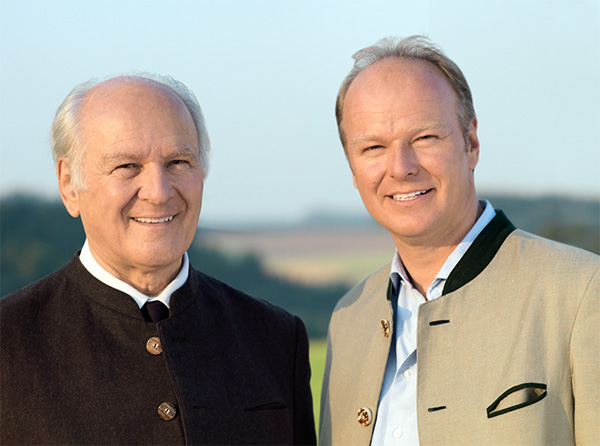
" Taking the baby into the limelight carries a great deal of responsibility, which is
why our organic products are of a very special quality and are GM-free according to the EU Organic Regulation. "
What began over 60 years ago with organic farming is practiced in all areas of the company: the careful use of the environment and natural resources, a respectful togetherness and the highest quality. All of these are requirements that HiPP has grown and that are closely associated with the name HiPP.
Sustainability as a corporate philosophy
Sustainability is the balanced balance between the three dimensions of ecology, economy and social issues. Sustainability is not a hot topic for HiPP. As a manufacturer of baby food, HiPP has special responsibility for future generations. HiPP has been committed to organic farming for 60 years and, as a pioneer, has shaped sustainable standards. Sustainability management keeps an eye on the company as a whole and the entire value chain. Long-term orientation of entrepreneurial activity, careful use of natural resources and social interaction are the key ethical principles followed by HiPP.
HiPP is "excellent"!
The involvement of HiPP has received many awards. The great trust of consumers and the public, which is documented in these recognitions, is both a great honor and a commitment for the baby food manufacturer. The company's claim is to continue meeting these expectations.
- Minister of the Environment awards HiPP the Ökologia Prize 2017
Since 2002, the Ökologia Prize has been awarded to companies or entrepreneurs who have committed themselves through particularly exemplary projects in favor of ecology and contributed to the realization of the desired ecological and social market economy. On October 19, 2017, Claus Hipp received the award from the Rhineland-Palatinate Minister of the Environment Ulrike Höfken in Mainz.
"From today's perspective, of course, many of what Claus Hipp did, of course, but 50 years ago, this was all new. In times of industrialization and chemical agriculture, Claus Hipp had already set a counter - trend here, created a different model of thinking and thus hit the nerve of the coming decades to this day ", said the Minister, handing the prize over in her function as" Ecologia Ambassador of the Ecology 2017 "together with Hans-Joachim Ritter. The Chairman of the Foundation for Ecology and Democracy said in his speech: "Claus Hipp is a pioneer of ecological awareness in agriculture and society, a shining example of an entrepreneurial personality,
previous awards: - dvi honors Prof. Dr. med. Claus Hipp with the Dieter Berndt Prize
- German CSR Award 2017 goes to HiPP
- EMAS environmental management 2016
- Climate Protection Award 2015
- 2015 "Customer favorite"
- WirtschaftsWoche named HiPP the most sustainable company
- 2014 "Honorary Querden Award"
- First place in the image ranking of WirtschaftsWoche
- CSR Award of the Federal Government
- German Sustainability Award of the Federal Government 2012
- FAUN category responsibility and sustainability
- Bavarian Family Contractor Award 2012
- German solar price
- Honoring for Umweltpakt Bayern
- Econosophen
- Pro Biokultura
- Steiger Award in the category Environment
- German Sustainability Award
- Environmental Award "Golden Flower of Rheydt"
Focus on the human being -
social and social responsibility
For HiPP, social responsibility is the essential basis for successful entrepreneurial action. This is reflected not only in the sustainable measures of personnel management, but also distinguishes the diverse social commitment in solidarity with people in need: HiPP helps young families with multiple births and regularly donates for the non-profit organization "Münchener Tafel e. V. ". Also auxiliary transport of Caritas in crisis areas supports HiPP. For the exemplary assumption of social responsibility HiPP 2013 received the first prize of the German Federal Government for Corporate Social Responsibility (CSR).
Appreciation and trust
Optimal working environment
As a family-friendly company, HiPP promotes the compatibility of family and work. Almost every department has different working models with flexible working hours, which give parents better career development opportunities. In Pfaffenhofen alone, 200 individual models and flextime variants without core time are used. The fact that the workforce feels comfortable is shown by the comparatively long periods of service.
health Management
The health and well-being of employees is the highest asset of a company. Those who feel comfortable feel more quality of life, are happier, more balanced and also more committed. Occupational health management is becoming more and more important as a component of HR, quality and sustainability management. Occupational pensions, high standards of occupational safety and health, action days for health, fitness and sports activities promote the well-being of our workforce. Organic food, regional food and allergen management round out the commitment in the company restaurant. So vegetarian and vegan dishes are also firmly integrated into the diet.
youth development
HiPP is international
Employees from over 20 different nations work at HiPP. We are especially proud of this cultural diversity. It enriches the corporate culture and strengthens our successful presence in the global environment.
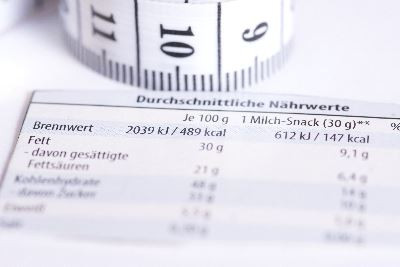 |  | ||||||||||||||||||||||||||||||||||||||||||||||||||||||||||||||||||||||||||||||||||||
Nutritional information | Ingredients | ||||||||||||||||||||||||||||||||||||||||||||||||||||||||||||||||||||||||||||||||||||
|
(1) from lactose, the natural milk sugar (7.0 g / 100 ml) |
(2) LCP (Omega-3 and -6) = long-chain polyunsaturated fatty acids Use
Important tips
|
Follow the instructions for use exactly when preparing infant milk formula
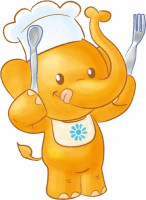
Improper preparation or storage of the prepared bottle over a longer period of time can lead to adverse health effects, e.g. due to the growth of undesirable germs. Check the closure for proper condition before use. Shake the still sealed bottle before opening it for the first time. Pour required amount of drink into a vial and warm to drinking temperature. Do not warm the food in the microwave (risk of scalding). Check temperature again before feeding. Feed food immediately and do not reuse leftovers. Clean bottle, nipple and ring thoroughly. After first opening, keep sealed in refrigerator (4-6°C) and use within 24h
Drinking quantity and dosage
Drinking amount per bottle may vary individually. Recommended amounts and number of bottles per day are guidelines. Your baby does not necessarily have to drink the entire bottle.
| Age | Bottle meal per day | Ready to drink food |
| 1.-2. week* | 5-7 | 70 ml |
| 3.-4. week | 5-7 | 100 ml |
| 5.-8. week | 5-6 | 135 ml |
| 3.-4. month | 5 | 170 ml |
| from 5. month | 4-5 | 200 ml |
| from 6. month | 4 | 235 ml |
* unless otherwise prescribed by the doctor
Nutrition for your baby at risk of allergies
- Details on nutrition for babies at risk of allergies can be found further down this page
- Breast milk or hypoallergenic formula such as HiPP Pre HA COMBIOTIK® or HiPP HA 1 COMBIOTIK®
- According to scientific findings, the same recommendations apply for starting with complementary foods as for children without an increased risk of allergies. Be guided by your child's development and start complementary foods at the earliest after the 4th month and at the latest after the 6th month - a later start to complementary foods does not offer better protection against allergies.
- It is important to introduce complementary foods into your baby's diet gradually. This gives your baby time to get used to the new food and you can always tell which foods he or she tolerates well.
- If the baby is on complementary feeding and one milk meal has been completely replaced by porridge, you can switch from Pre HA COMBIOTIK® or HA1 COMBIOTIK® to HA2 COMBIOTIK® after six months to accompany complementary feeding. If you have any questions regarding the introduction of complementary feeding or your child's nutrition, please contact your pediatrician or midwife.
- Even though we clearly mark changes in our products, we would like to advise you of the following: If your child has an allergy or food intolerance, we recommend that you always check the relevant list of ingredients before using a food product. Even if you use the product regularly.
Allergy
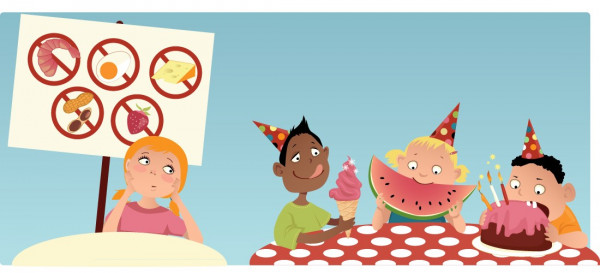
Find out here what is important for your baby's diet if he or she is at risk of allergies. What initial food does it need if it cannot be breastfed and how and when to introduce complementary foods? Our guide will help you feed your baby the right way.
Even though we clearly mark changes to our products, we would like to advise you of the following: If your child has an allergy or food intolerance, we recommend that you always check the respective list of ingredients before using a food. Even if you use the product regularly.
Allergen labeling - what's new?
With the new Food Information Regulation (LMIV) coming into force, the 14 most common food allergens must be highlighted in the list of ingredients from 13.12.2014 at the latest, e.g. by font, font style or underlining. HiPP is of course also implementing the new legal regulations as quickly as possible.
Trace labeling - what is behind it?
On some packaging you will also find the statement "may contain traces of ..." - usually in the visible field of the ingredients list. This is a voluntary indication by the manufacturer. This information means that despite careful manufacturing practices, it is sometimes impossible to avoid the inclusion of minute traces of allergenic substances in the product. The HiPP Baby Biscuit, for example, is manufactured without the addition of egg, sesame seeds or nuts. At the same time, however, nuts, sesame and egg are also processed at the production site. In this case, therefore, it cannot be 100 percent ruled out that minute traces of these ingredients may find their way into the HiPP Baby Biscuit.
In many cases, allergy sufferers show no reaction at all to possible traces of an allergen. However, the tolerance level above which allergic reactions occur is individual for each person. If you or your child react to even the smallest amounts with severe allergic symptoms, you should keep a close eye on the trace labeling.
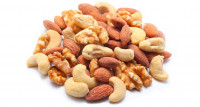 Unfortunately, many manufacturers use different terms for allergens. Sometimes they talk about nuts and/or seeds, sometimes about nuts. This sometimes causes confusion among consumers as to exactly which allergen is meant. In common parlance, hazelnuts, peanuts, almonds and the like are often referred to as nuts. Botanically speaking, however, only hazelnuts and walnuts are true nuts. So what is now counted as a nut?
Unfortunately, many manufacturers use different terms for allergens. Sometimes they talk about nuts and/or seeds, sometimes about nuts. This sometimes causes confusion among consumers as to exactly which allergen is meant. In common parlance, hazelnuts, peanuts, almonds and the like are often referred to as nuts. Botanically speaking, however, only hazelnuts and walnuts are true nuts. So what is now counted as a nut?
For this reason, we at HiPP have decided to use the term nuts in trace labeling in the future - in line with the legal requirements for allergen labeling. Nuts include: Almonds, hazelnuts, walnuts, cashews, pecans, Brazil nuts, pistachios and macadamia nuts. Traces of peanuts, which can often cause allergic reactions in even the smallest amounts, are still listed separately.
Important: Please always talk to your pediatrician or an allergist if you are unsure or you suspect your child is suffering from an allergy or intolerance. He or she can also help you with many questions about allergies.
At daab (Deutscher Allergie- und Astmabund e.V.) you can also obtain further information on this subject.
 Bebivita Pre HA, hypoallergene Anfangsmilch von Geburt an, 500g
Bebivita Pre HA, hypoallergene Anfangsmilch von Geburt an, 500g 




 Hipp Bio Combiotik 2 follow-on milk from 6th month, 600g
Hipp Bio Combiotik 2 follow-on milk from 6th month, 600g  Hipp children's milk combiotik from the 1st year, 600g
Hipp children's milk combiotik from the 1st year, 600g  Hipp HA2 Combiotik Hydrolisierte Folgemilch nach 6 Monaten, 600g
Hipp HA2 Combiotik Hydrolisierte Folgemilch nach 6 Monaten, 600g 

